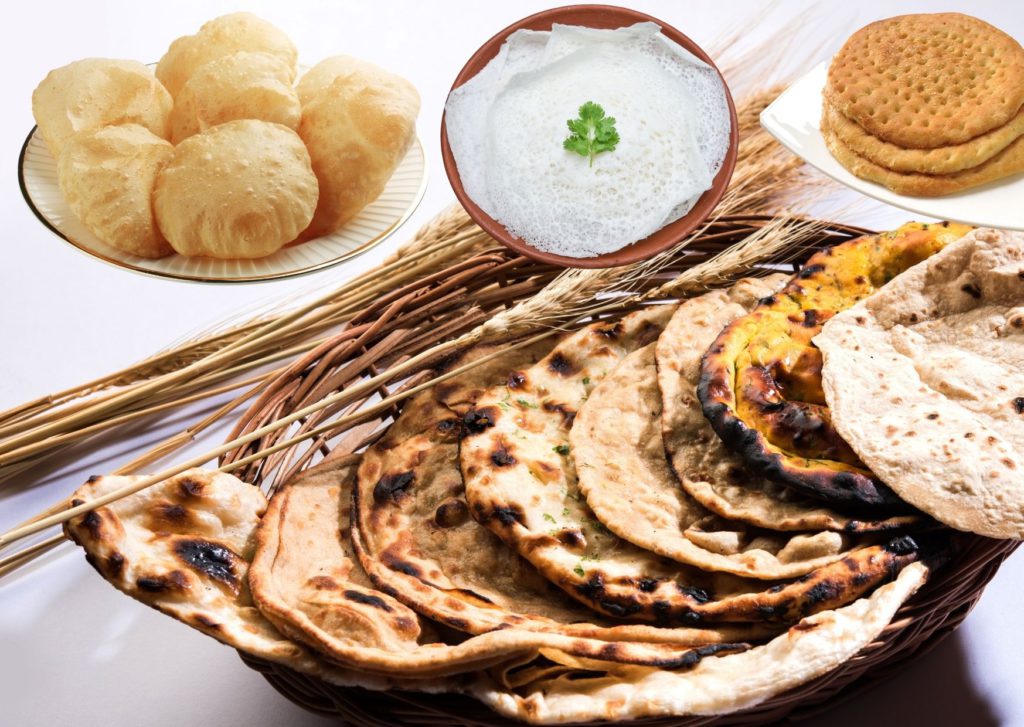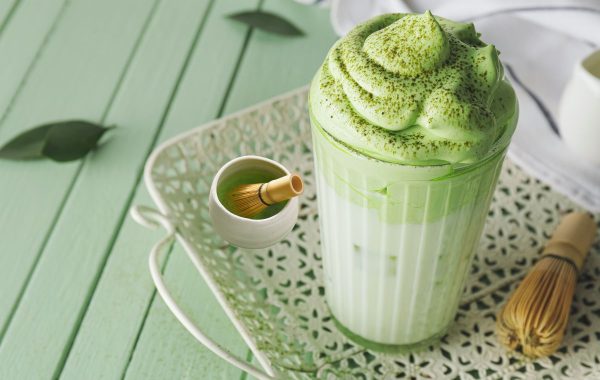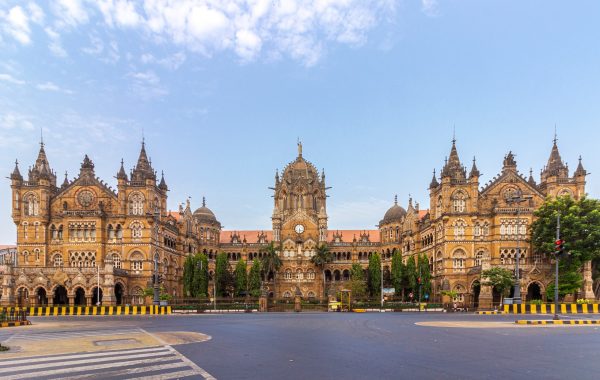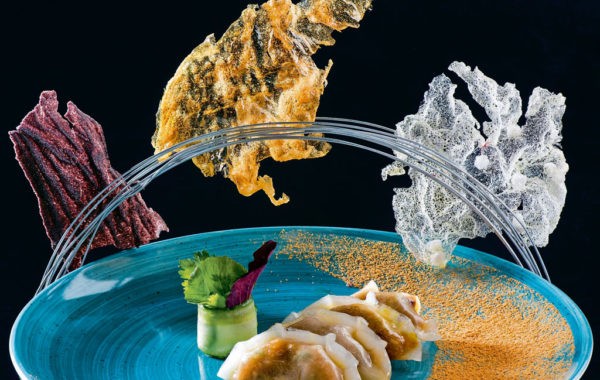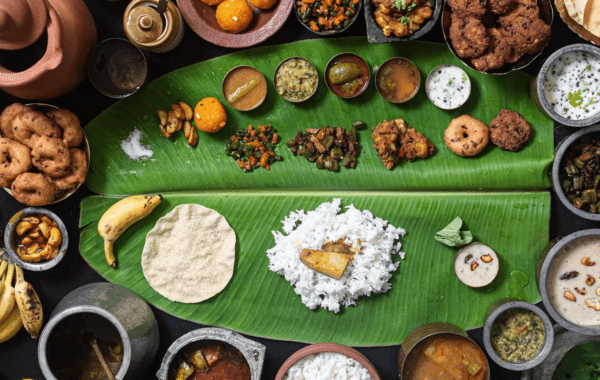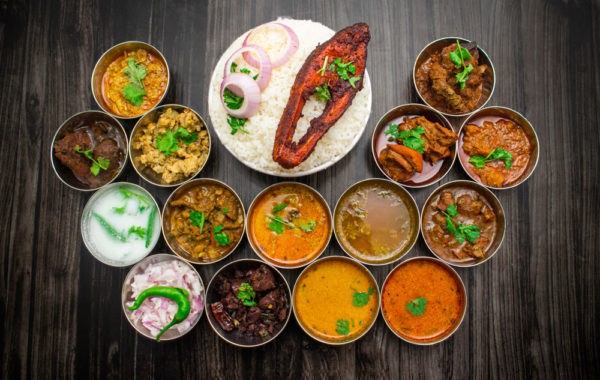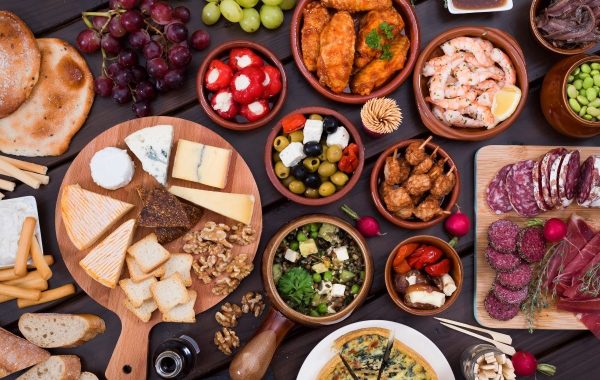With 29 states, each with its own topography and traditions, India’s food experiences vary based on the landscape, climate, immigration patterns, people, and culture – making it difficult to define one type of Indian cuisine. One of the best examples of India’s food diversity lies in its bread. bread is the cornerstone of Indian cuisine. Whether it’s bhakri, luchi, baati, phulka, thepla, chapati, or sheermal, Indian bread is a continual household staple because of the simplicity of the ingredients and yet the wholesomeness it offers. We’ve listed 12 iconic, must-try bread from different regions of the country that will make your meals in India unforgettable.
North India
1. Paratha: Versatile, buttery, aromatic, and irresistible, that’s how you describe ‘Parathas’. These flaky and layered golden-brown Indian flatbreads are not only consumed for breakfast but are also the perfect accompaniment with curry for lunch or dinner. It consists of whole wheat flour that is baked in ghee (Indian clarified butter) and comes in round, triangular, square, or heptagonal shapes. Folding and rolling the dough over thinly spread fat creates sumptuous layers that are rich with flavor, employing a technique similar to that used for croissants or puff pastry.
Parathas are often stuffed with ingredients such as boiled potatoes, cauliflower, peas, cottage cheese, or radish. Stuffed wheat bread has been made in India for hundreds of years, and several varieties even get a shout-out in the “Manasollasa,” a 12th-century Sanskrit text that contains some of the earliest written descriptions of the region’s food. These flatbreads are sometimes accompanied by pickles, yogurt, homemade chutneys, or meat and vegetable curries. In North India, Paratha is traditionally paired with lassi, a popular yogurt-based drink.
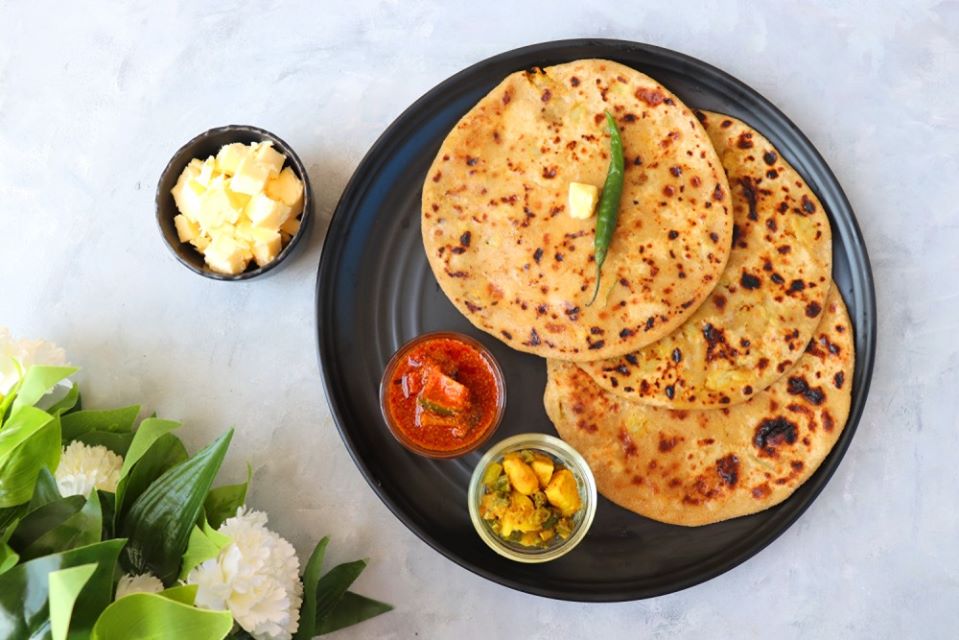
2. Naan: From Masterchefs to the British Baking Show, Naan has gotten a lot of international attention over the years. The earliest documented obsession began when William Tooke, a British historian, wrote about it in his travelogue in 1803. And we don’t blame them. This leavened, oven-baked flatbread that has traveled from Iran to India and then some more, to Western Asia and Myanmar and even the Caribbean has had an inspiring journey to world domination. Typically made from dough made of white flour, ghee or oil, yogurt, yeast, and salt and then flattened out and baked in a clay pot, naan has been reinvented by chefs from around the world who have been innovating to crack the code for the ultimate pillowy yet crispy naan. It’s often paired with chicken curries and vegetables. But the latest variations of naans are slowly making them active participants in unlikely dishes, like hummus naan toast and naan pizza. However, if you look at the traditional variants, the innovation is endless. From Peshawari naan or Kashmiri Naan stuffed with dry fruits, to Keema Naan (naan stuffed with spicy keema or ground meat), every region and culture has found new ways to love the already loved Indian bread.
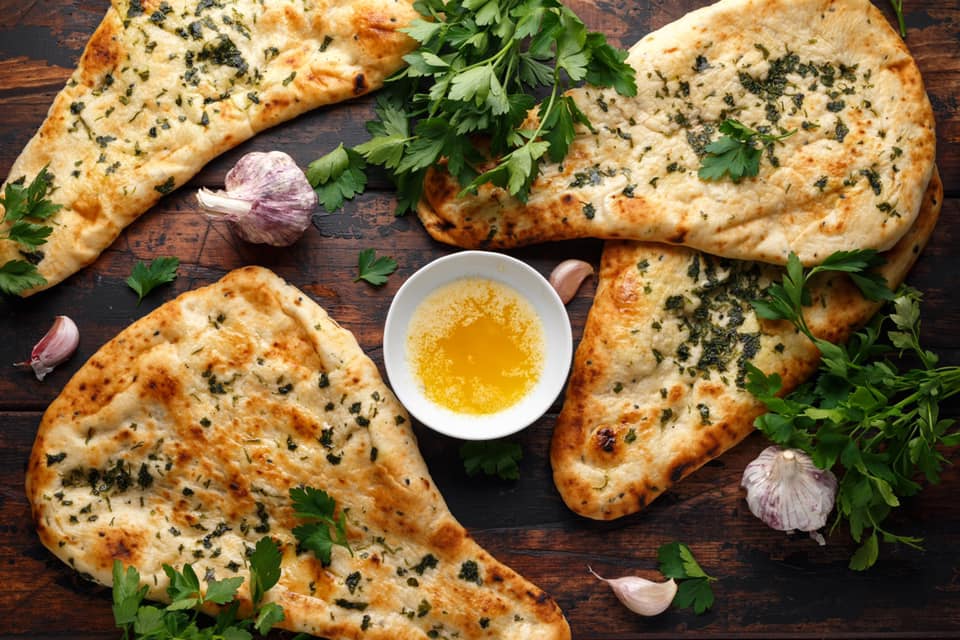
3. Sheermal: Sheermal is a Kashmiri flatbread made with maida flour, milk, saffron, and yeast. It is characterized by its strong saffron flavor and yellow color. The bread is traditionally baked in a tandoor oven and served warm, preferably with soups or meat dishes such as kebabs and curries. Pair it with Kahwa and it becomes an evening snack. The name sheermal means milk bread, referring to one of its key ingredients, imparting a slightly sweet flavor to the flatbread. For additional sweetness, some cooks like to add dried fruit into the dough.
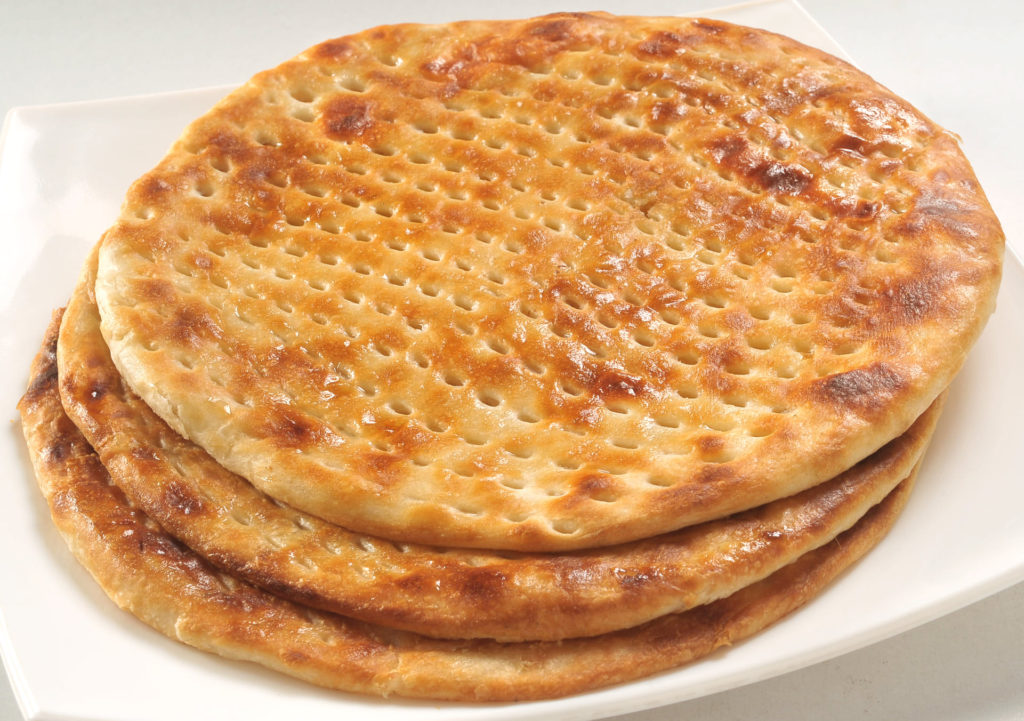
4. Bhaturas are leavened, fried bread that is best-eaten piping hot right as they are made. Bhatura dough needs up to five hours to rise before being made into larger circles and deep-fried. The dough puffs up, similar to a poori, and is perfectly served alongside chole (chickpea curry), a popular North Indian dish.
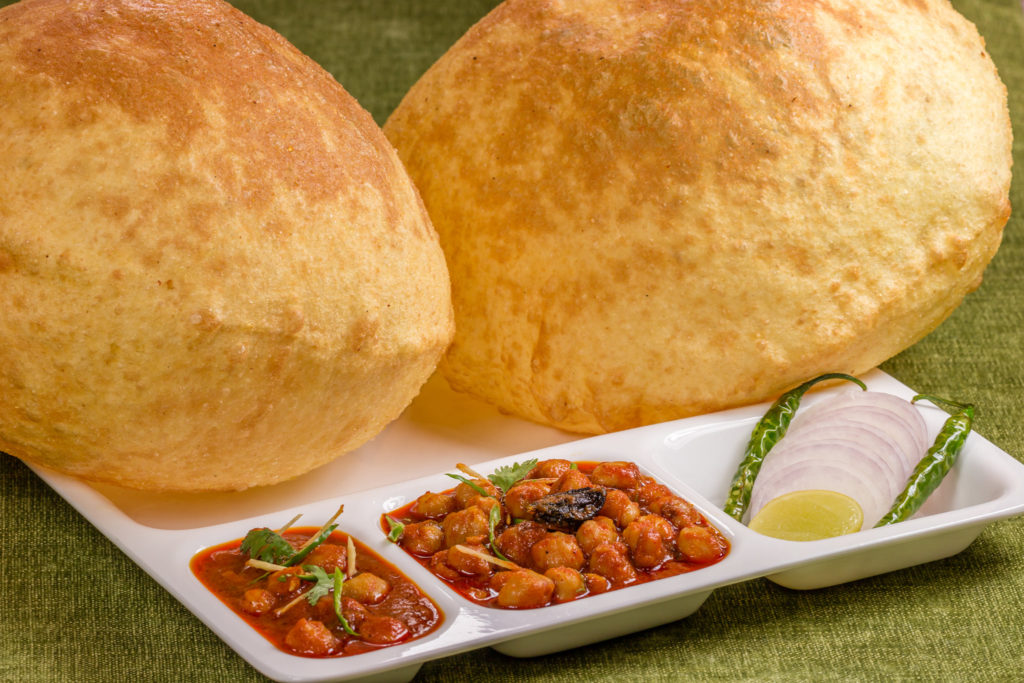
5. Kulcha: Kulcha is a mildly leavened bread prepared with all-purpose flour without any yeast, but rather leavened with yogurt and/or baking powder. Though it’s similar to naan, you don’t need a tandoor oven to make kulcha; you can easily prepare it on a griddle. In the royal kitchens, kulchas were typically stuffed with vegetables and meat. Today, the most popular version of this bread is the Amritsari kulcha, stuffed with potatoes and traditionally served alongside Amritsari chana masala (chickpea curry).
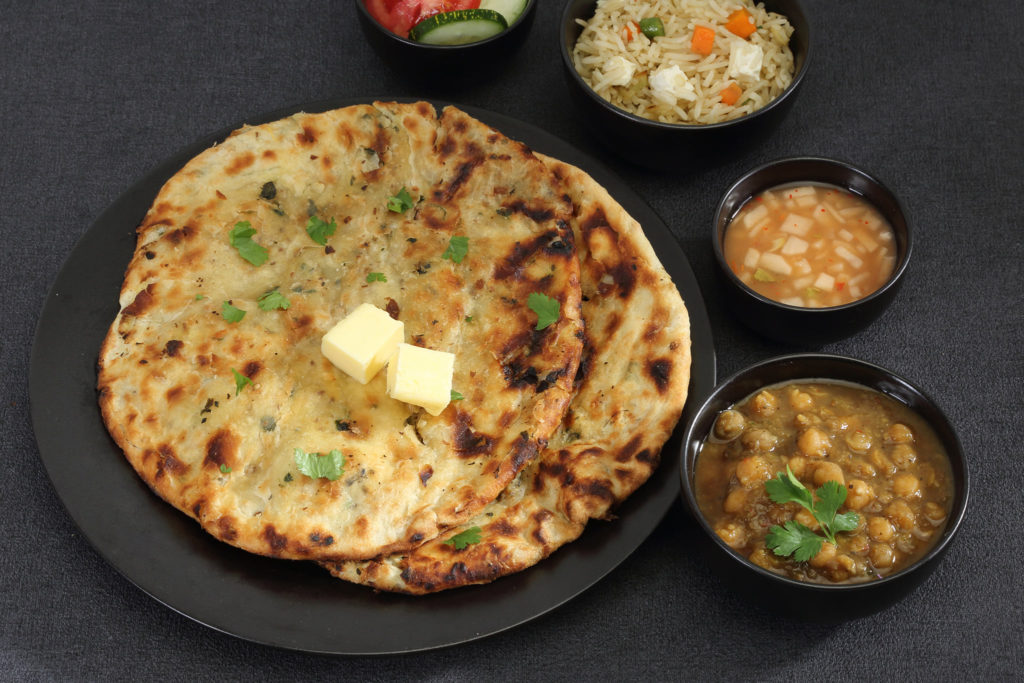
West India
6. Thepla: The most delicious flatbread from the Gujarati cuisine, that can be consumed during any meal of the day. It is usually prepared with wheat flour, gram flour or millet flour, and spices. Some even prefer adding veggies and greens like fenugreek leaves or bottle gourd to make it more nutritious. Unlike the veggies stuffed inside parathas, the veggies here are mixed with dough, which is rolled out and cooked.
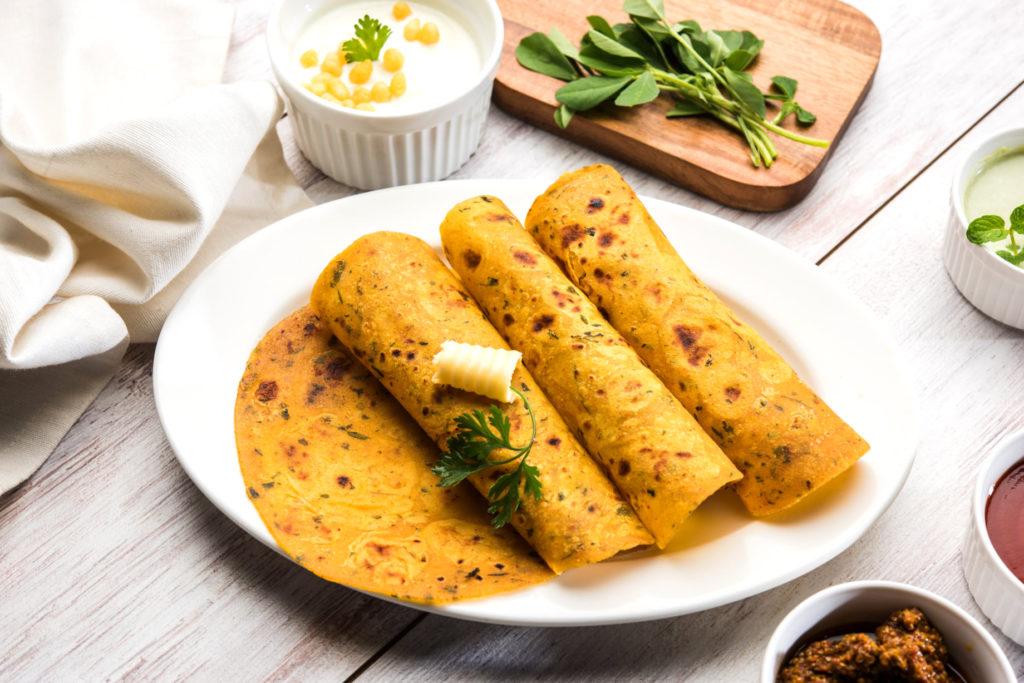
7. Bhakri: A common preparation in the regions of Maharashtra, Gujarat, and Rajasthan, Bhakri is a thick flatbread made from different kinds of flours such as Ragi (finger millet), Bajra (pearl millet), Rice, and Jowar (sorghum). It is coarser and thicker as compared to the roti or the chapatti and is often served with gravies or chutneys.
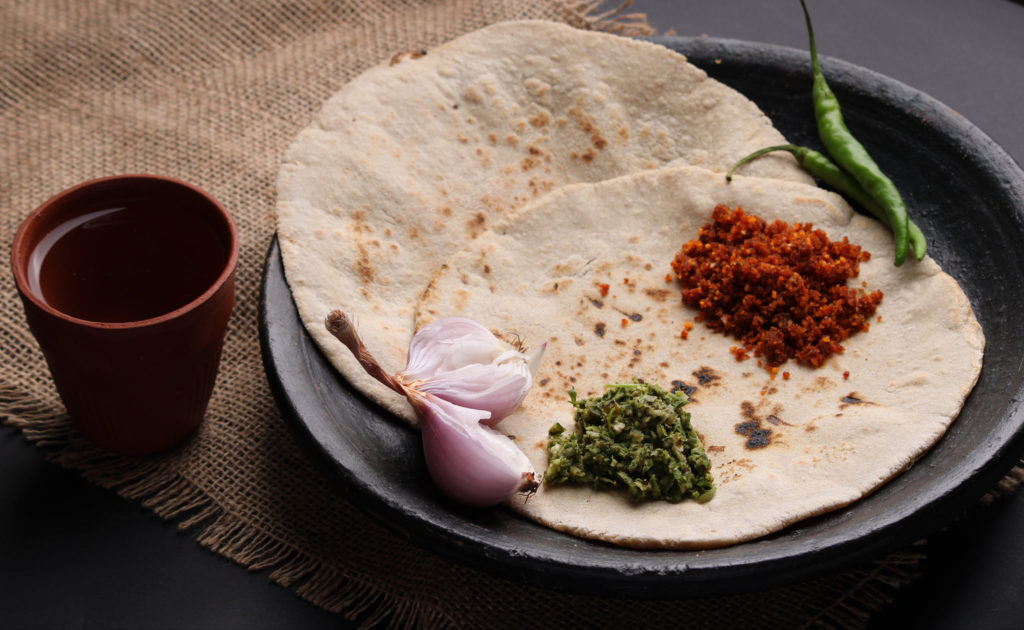
8. Thalipeeth is a multigrain savory pancake-like bread belonging to the Maharashtrian cuisine of India. The batter is prepared with a base of Bhajani multi-grain flour – prepared from roasted tapioca (sabudana), rajgira (Amaranth), while cumin, chilies, coriander, turmeric, and onions are also added to the mix, making the dish slightly hot and spicy in the process. Thalipeeth is commonly served for breakfast with butter, yogurt, or curd and is a meal in itself kind of bread. There are also some variations on the dish, such as thalipeeth with potatoes and peanuts, and thalipeeth with finely chopped vegetables.
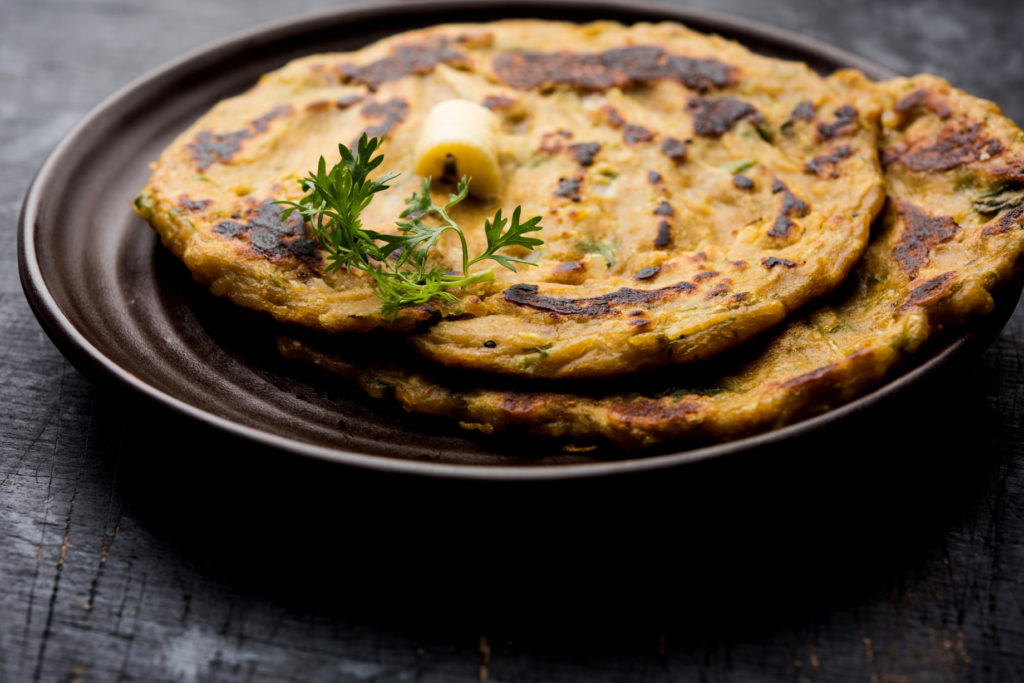
East India
9. Luchi: One bread that is truly indulgent is the luchi from Bengali, Oriya, and Assamese cuisine. A mark of a good luchi is that it is fresh, light, fluffy, crunchy, flaky, and deflates when you tear it. As it melts in your mouth, you truly succumb to this divine experience.
Puffed luchis are deep-fried unleavened bread that is made from all-purpose flour or maida and ghee and is traditionally served with Aloor Dum ( deep-fried potato cooked in gravy with spices) or Cholar Dal (Lentils with coconut and spices). The carbohydrate quotient is high so it’s safe to say that the only redeeming factor for the health-conscious would be the paired curry or vegetable, though meat lovers often pair it with Kosha Mangsho (Mutton Curry) and claim it to be a divine pairing.
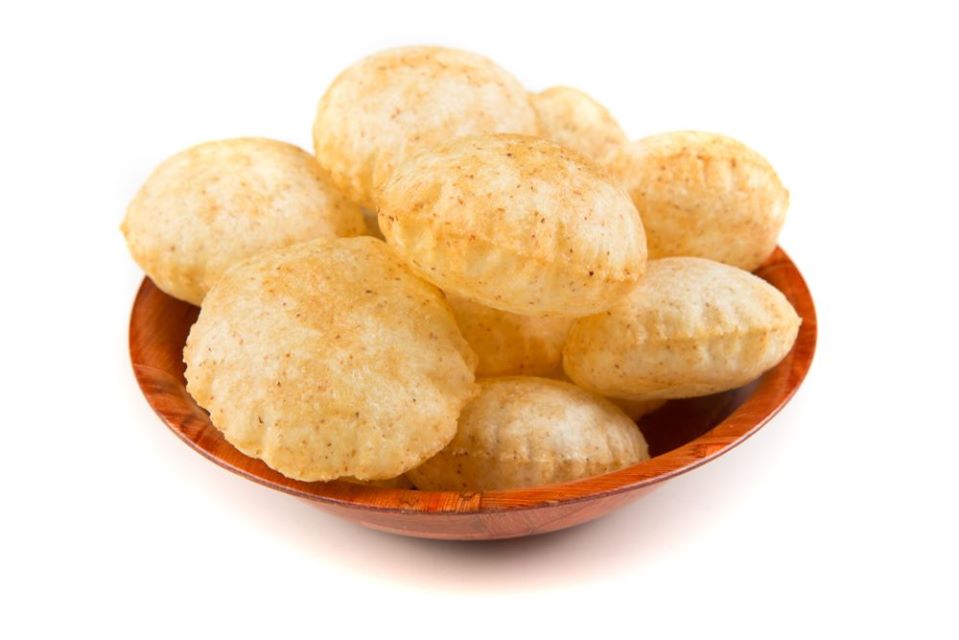
10. Litti : A famous accompaniment with some spicy chokha (mashed and spiced potato), litti is a traditional dish in Bihar and Jharkhand. These whole-wheat balls are stuffed with sattu or roasted chana dal flour along with other spices before being roasted and tossed in ghee. Litti shares a resemblance with Rajasthan’s bati bread (hard unleavened bread made from flour, oil, and water, sometimes stuffed with onions or peas, served with different kinds of hot piping dals and ghee, and the most important component of the dal baati churma dish)
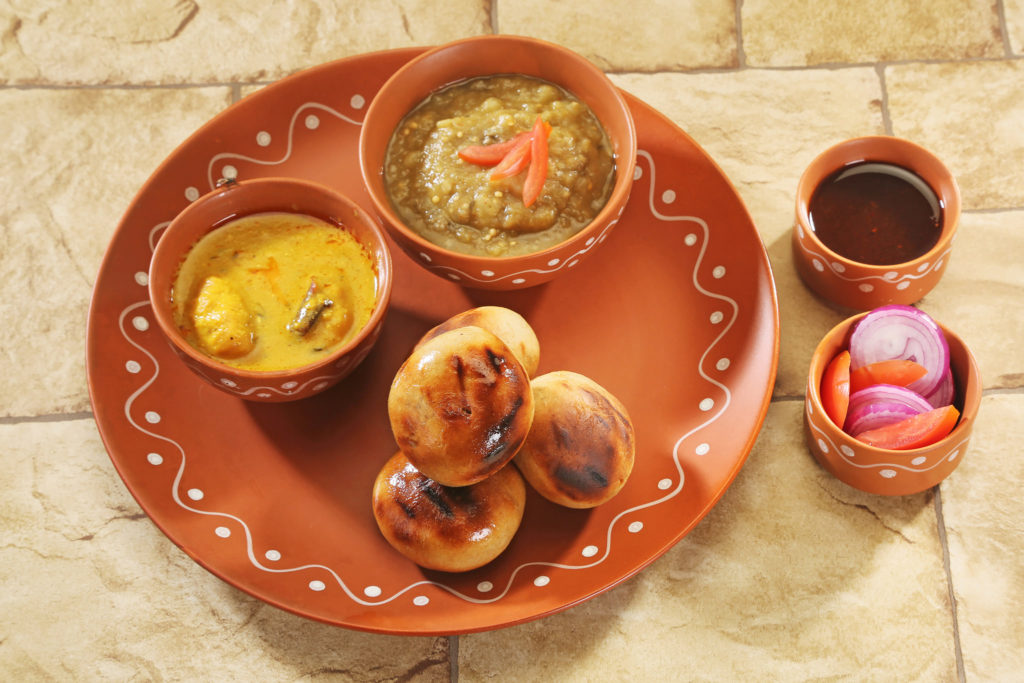
South India
11. Appams: Most popular in Tamil Nadu and Kerala, Appams are soft, lacy bowl-shaped thin pancakes made from fermented rice and coconut milk, and are frequently eaten for dinner and breakfast. On their own, appams are fairly neutral and are perfect to balance out the spicy condiments and flavor kadala( chickpea) curries. However, over the years, the appam has been reinvented to pair with different condiments and spread across different cultures. Egg Hoppers, which have egg is broken into the appam as it cooks, honey hoppers, which are cooked with palm treacle and jaggery, and Kallappam, in which kallu is added to the fresh batter to kickstart fermentation, are just some of the variations. This versatile dish has received special interest from the fitness world as dieticians modify this delicious dish to make it vegan and gluten-free.
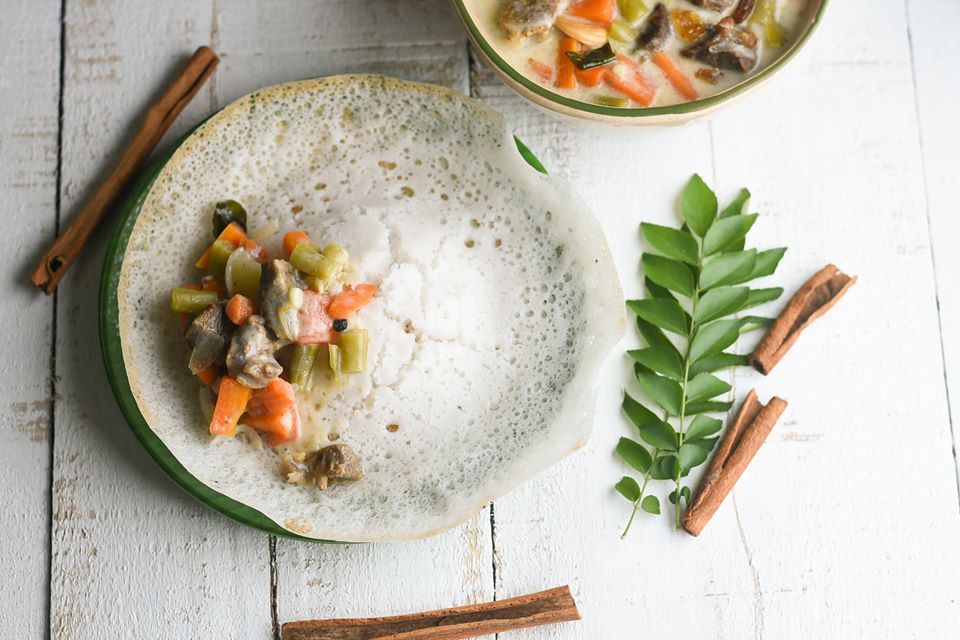
12. Dosa: This thin pancake prepared with fermented rice and lentil batter is one of the most popular breads in Southern India. It is then baked on a hot oiled griddle, in a delicate, thin texture and round shape and served with coconut chutney and Sambar (a tamarind-based broth containing lentils and vegetables). It is believed that dosa had originated in the south Indian state of Tamil Nadu, tracing back to the 1st century AD, when it was first mentioned in Tamil literature. Others claim that it’s linked to Udupi (present-day Karnataka) due to its association with the Udupi restaurants. Either way, Dosa has become a much-loved breakfast dish in the entire country. As with other ancient food staples, dosa has been adapted and combined with other ingredients to create numerous distinct varieties – Masala Dosa (with potato filling), cheese dosa, Chinese dosa, and so on.
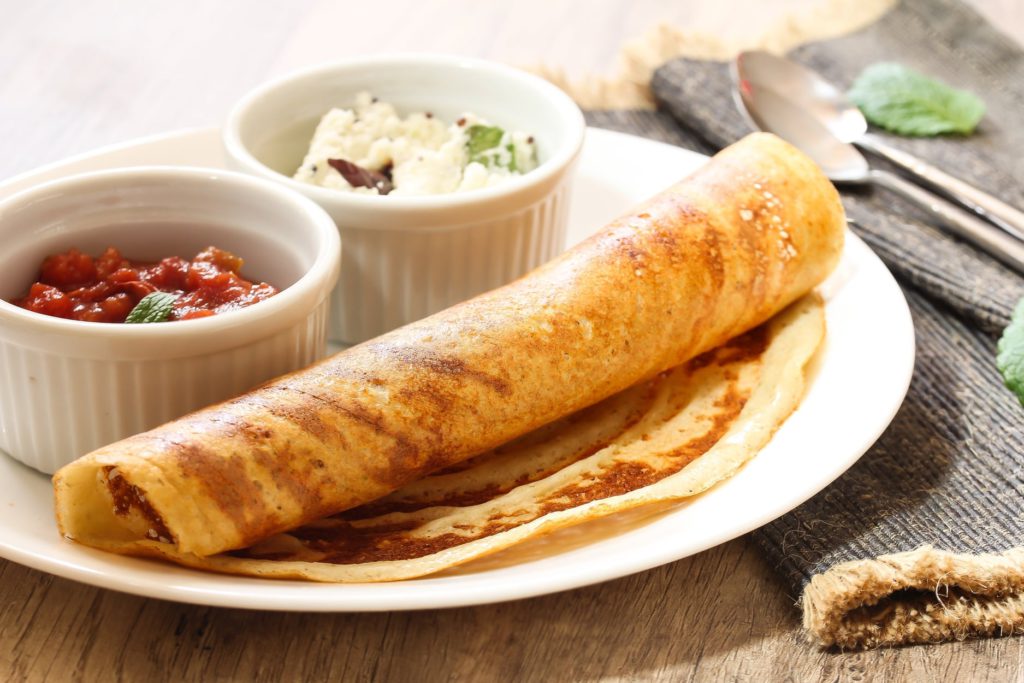
Trending Food Stories:
For the latest travel news and updates, food and drink journeys, restaurant features, and more, like us on Facebook or follow us on Instagram. Read more on Travel and Food Network
Also Checkout the below articles


